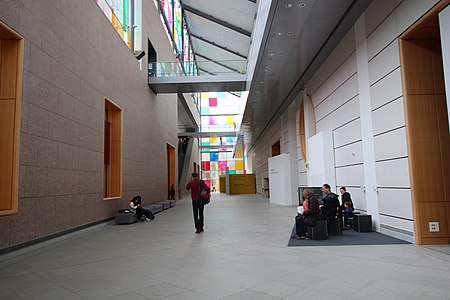Strasbourg Museum of Modern and Contemporary Art

The Musée d'Art Moderne et Contemporain de Strasbourg (MAMCS, Museum of Modern and Contemporary Art) is an art museum in Strasbourg, France, which was founded in 1973 and opened in its own building in November 1998. One of the largest of its kind in France, the museum houses extensive collections of paintings, sculpture, graphic arts, multimedia and design from the period between 1870 (Impressionism) and today, as well as a wide range of pieces in its photographic library. It owns a total of 18,000 works. Numerous exhibitions are organized annually, showing either the works of a particular artist or a retrospective of an artistic genre. The art library of the municipal museums (Bibliothèque d'art des musées municipaux), the art book shop of the municipal museums (Librairie d'art des musées municipaux) and a multi-purpose auditorium for conferences, films and concerts are also found in the same building. The spacious roof terrace accommodates a museum cafe.
Excerpt from the Wikipedia article Strasbourg Museum of Modern and Contemporary Art (License: CC BY-SA 3.0, Authors, Images).Strasbourg Museum of Modern and Contemporary Art
Quai Marc Bloch, Strasbourg Tribunal-Gare-Porte de Schirmeck
Geographical coordinates (GPS) Address External links Nearby Places Show on map
Geographical coordinates (GPS)
| Latitude | Longitude |
|---|---|
| N 48.579444444444 ° | E 7.7361111111111 ° |
Address
Musée d'Art Moderne et Contemporain
Quai Marc Bloch
67003 Strasbourg, Tribunal-Gare-Porte de Schirmeck
Grand Est, France
Open on Google Maps








